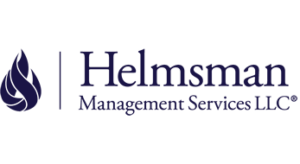
General trends in technology, outsourcing, and legal variables are often beyond any one enterprise’s control, but careful attention to risk management and claims handling practices can mitigate the overall impact of liability exposures.
As 2019 segues into a new decade, enterprises, third-party administrators, and insurers must monitor – and make potential accommodations for – the following trends.
Jurors demand responsibility.
When liability issues land in the courtroom, another important perspective comes into play: that of the jury. Motivated by a deepening sense of social responsibility, many jurors hold businesses to high standards of accountability, expecting them to pay for an injured party’s physical and non-physical damages. Therefore, juries are increasingly inclined to make more punitive-Opens in new window and pain-and-suffering awards.
Outsourcing complicates exposure.
A tight labor market – particularly for auto drivers – has encouraged businesses to meet growth pressures with outsourced labor, expanding the “shared economy.” But the increased distance between employee and employer has not deterred an increase in liability exposures-Opens in new window.
Consider the impact of an established e-commerce industry that depends on meeting consumer demands for near-instant gratification. To allow for rapid one-day or same-day shipping, businesses often reach beyond their in-house capacity to outsource delivery options that may include drivers operating their own vehicles.
“That introduces a whole new element of risk,” said Meg Sutton, Senior Vice President & Manager, US Casualty Claims. “Often companies will outsource thinking they’ve eliminated their auto exposure. But they may still be responsible for ensuring that a qualified driver is behind the wheel, even if it’s not a company vehicle or your employee.”
Convenient technology complicates liability.
The same technology that promises less work can simultaneously make liability more complicated. In a semi-autonomous vehicle, an accident that once would have been attributed to the driver may now be assigned to multiple parties: the vehicle owner, the original equipment manufacturer, or the developer of the vehicle’s software.
Complexity grows as more companies automate the value chain through technologies such as 3-D printing, robotics, artificial intelligence, and others. As the chain expands, more parties contribute to (and are accountable for) the development, adoption, and outcomes of these automated processes. Given their complexity, anticipating consequences becomes more difficult, yet more urgent. To gain greater control of their liability exposure, Sutton insists, “Businesses should also consider how new technologies may affect the ‘foreseeability’ of incidents.”
Looking Ahead of the Risk Curve
In this evolving landscape, companies are encouraged to reassess their risk mitigation strategies and claims handling procedures to be sure they are aligned with the new realities of general liability. It’s critical to work with a third–party administrator that has the skills, experience, and expertise to help you assess your policies in light of changing technology.
By addressing complex liabilities head on, businesses can signal to all parties involved, including potential jurors, the depth of their commitment to safety.
Featured insights
This website is general in nature and is provided as a courtesy to you. Information is accurate to the best of Helmsman Management Services’ knowledge, but companies and individuals should not rely on it to prevent and mitigate all risks as an explanation of coverage or benefits under a policy or service contract. Consult your professional advisor regarding your particular facts and circumstance. By citing external authorities or linking to other websites, Helmsman Management Services is not endorsing them.





